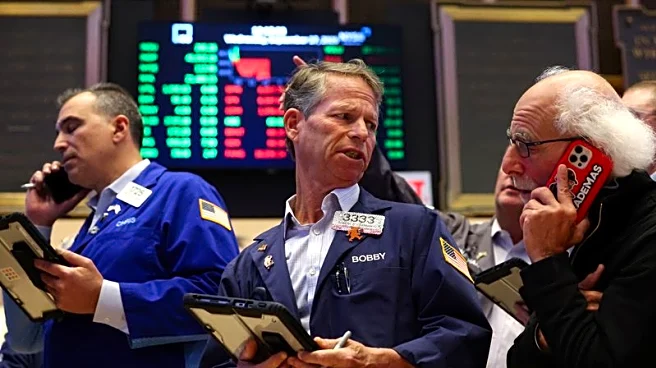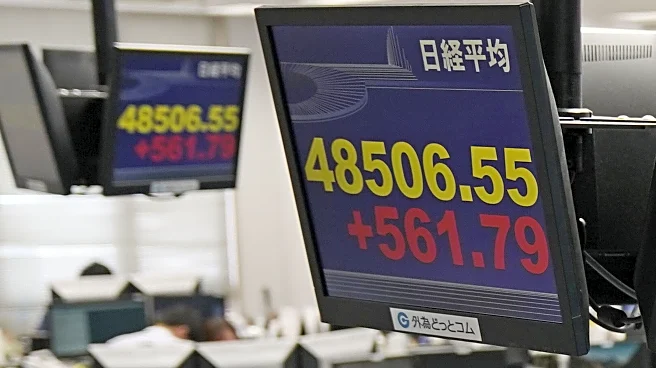What's Happening?
Gold prices have surged past $4,000 per ounce for the first time, driven by geopolitical risks, central bank buying, ETF inflows, U.S. rate cut expectations, and economic uncertainties stemming from tariffs. The metal has gained more than 53% year-to-date, marking the largest annual gain since the 1979 oil crisis. Silver also hit a record high, bolstered by gold's rally, growing investor demand, and a supply deficit. The ongoing U.S. government shutdown and fiscal concerns in Japan and France have further fueled gold's momentum. President Trump announced a ceasefire and hostage deal between Israel and Hamas, which has impacted risk-off flows and the strength of bullion.
Why It's Important?
The surge in gold prices reflects broader economic and geopolitical uncertainties, including the Middle East crisis and the war in Ukraine. As a non-yielding asset, gold thrives in low interest-rate environments and during times of uncertainty, making it an attractive hedge against inflation and economic instability. The U.S. dollar's recovery poses a challenge to gold's strength, as it makes dollar-priced bullion more expensive for overseas buyers. The Federal Reserve's consideration of rate cuts highlights concerns about the U.S. job market and inflation, which could further influence gold prices.
What's Next?
Markets are currently pricing in a 25 basis-point cut in both October and December, which could impact gold prices. If risk sentiment improves, gold prices may face downward pressure as investors shift towards riskier assets. The ongoing geopolitical tensions and economic uncertainties will continue to play a significant role in shaping gold's trajectory. Stakeholders, including investors and policymakers, will closely monitor these developments to assess their impact on the financial markets.
Beyond the Headlines
The rally in gold prices underscores the complex interplay between geopolitical events and economic policies. The ceasefire deal between Israel and Hamas, while reducing immediate risk-off flows, highlights the fragile nature of geopolitical agreements and their potential impact on global markets. Additionally, the U.S. government's fiscal policies and international relations will continue to influence investor sentiment and commodity prices.












